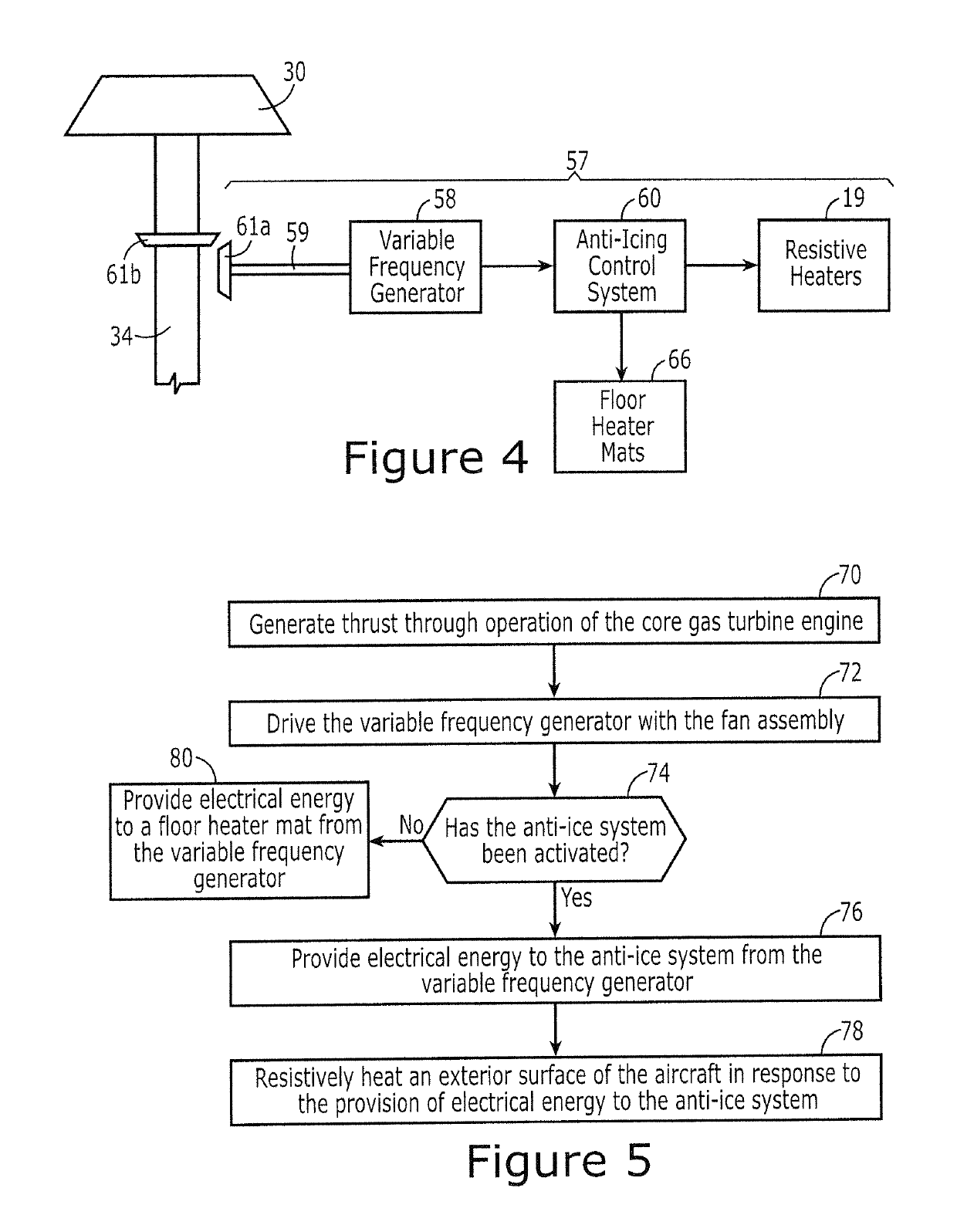Aircraft and associated method for providing electrical energy to an anti-icing system
a technology of electrical energy and aircraft, which is applied in the direction of machines/engines, efficient propulsion technologies, transportation and packaging, etc., can solve the problems of increasing the size of the pre-cooler, increasing the cost of the ductwork, and the flaps and other control surfaces of the aircraft, so as to achieve the effect of effectively providing electrical power, increasing the size of the aircraft engine, and not increasing the engine siz
- Summary
- Abstract
- Description
- Claims
- Application Information
AI Technical Summary
Benefits of technology
Problems solved by technology
Method used
Image
Examples
Embodiment Construction
[0022]Embodiments of the present disclosure now will be described more fully hereinafter with reference to the accompanying drawings, in which some, but not all embodiments are shown. Indeed, these embodiments may be embodied in many different forms and should not be construed as limited to the embodiments set forth herein; rather, these embodiments are provided so that this disclosure will satisfy applicable legal requirements. Like numbers refer to like elements throughout.
[0023]As shown in FIG. 1, an aircraft 10 generally includes an aircraft body 12 having two or more wings 14 extending laterally outward therefrom. The aircraft 10 may include flaps 16 and other control surfaces for facilitating the controlled flight of the aircraft. At least some of the flaps 16 are disposed along the leading edge of the wings 14. In the example embodiment depicted in FIG. 1, the wings 14 may include a plurality of flaps 16 along their leading edges with each flap configured to be controllably d...
PUM
 Login to View More
Login to View More Abstract
Description
Claims
Application Information
 Login to View More
Login to View More - R&D
- Intellectual Property
- Life Sciences
- Materials
- Tech Scout
- Unparalleled Data Quality
- Higher Quality Content
- 60% Fewer Hallucinations
Browse by: Latest US Patents, China's latest patents, Technical Efficacy Thesaurus, Application Domain, Technology Topic, Popular Technical Reports.
© 2025 PatSnap. All rights reserved.Legal|Privacy policy|Modern Slavery Act Transparency Statement|Sitemap|About US| Contact US: help@patsnap.com



